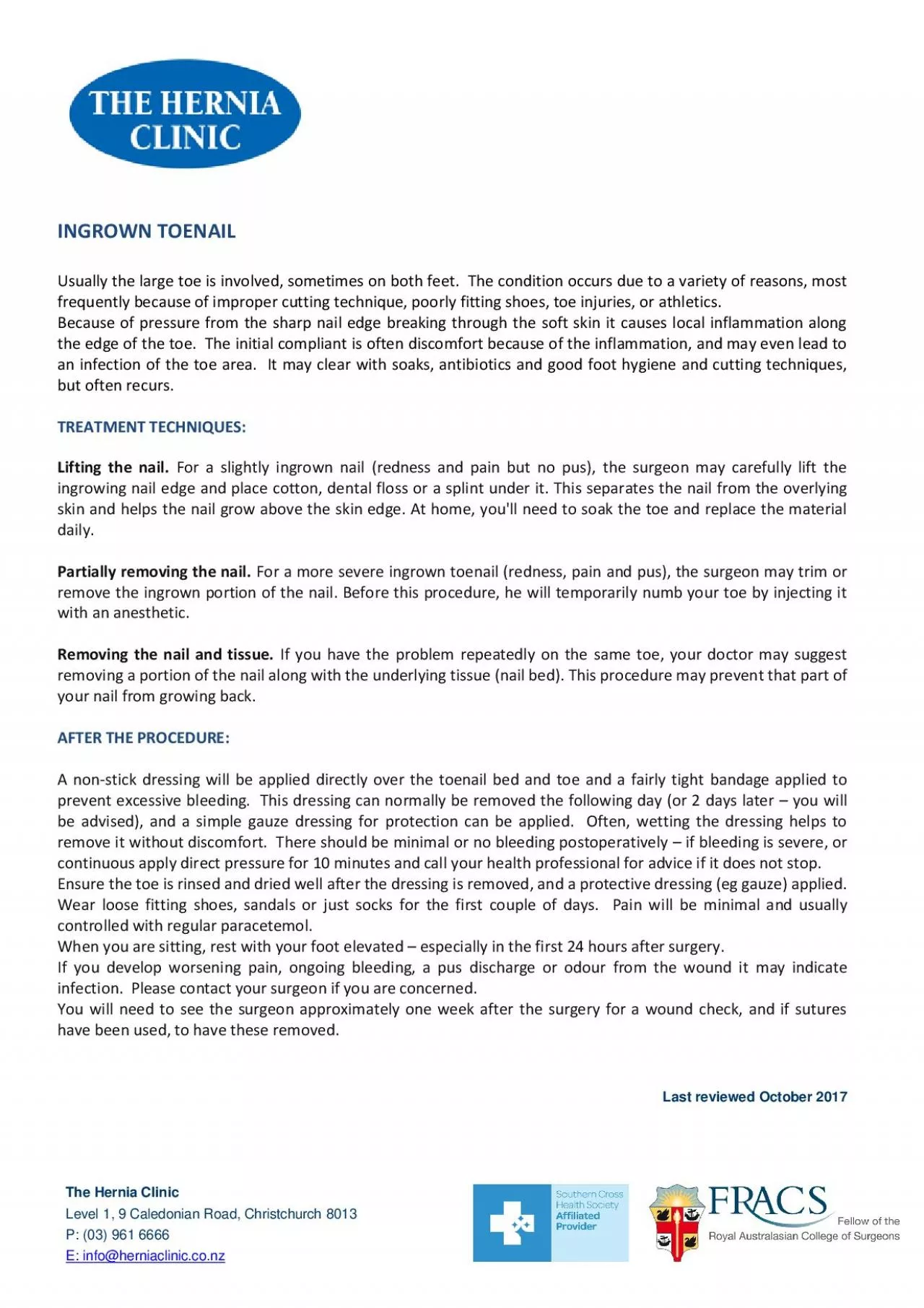

Usually the large toe is involved sometimes on both feet The condition occurs due to a variety of reasons most frequently because of improper cutting technique poorly fitting shoes toe injuries ID: 961681
Download Pdf The PPT/PDF document "INGROWN TOENAIL" is the property of its rightful owner. Permission is granted to download and print the materials on this web site for personal, non-commercial use only, and to display it on your personal computer provided you do not modify the materials and that you retain all copyright notices contained in the materials. By downloading content from our website, you accept the terms of this agreement.
INGROWN TOENAIL Usually the large toe is involved, sometimes on both feet. The condition occurs due to a variety of reasons, most frequently because of improper cutting technique, poorly fitting shoes, toe injuries, or athletics. Because of pressure from the sharp nail edge breaking through the soft skin it causes local inflammation along the edge of the toe. The initial compliant is often discomfort because of the inflammation, and may even lead to an infection of the toe area. It may clear with soaks, antibiotics and good foot hygiene and cutting techniques, but often recurs. TREATMENT TECHNIQUES: Lifting the nail. For a slightly ingrown nail (redness and pain but no pus), the surgeon may carefully lift the ingrowing nail edg e and place cotton, dental floss or a splint under it. This separates the nail from the overlying skin and helps the nail grow above the skin edge. At home, you'll need to soak the toe and replace the material daily. Partially removing the nail. For a mor e severe ingrown toenail (redness, pain and pus), the surgeon may trim or remove the ingrown portion of the nail. Before this procedure, he will temporarily numb your toe by injecting it with an anesthetic. Removing the nail and tissue. If you have the problem repeatedly on the same toe, your doctor may suggest removing a portion of the nail along with the underlying tissue (nail bed). This procedure may prevent that part of your nail from growing back. AFTER THE PROCEDURE: A non - stick dressing will be applied directly over the toenail bed and toe and a fairly tight bandage applied to prevent excessive bleeding. This dressing can normally be removed the following day (or 2 days later – you will be advised), and a simple gauz e dressing for protection can be applied. Often, wetting the dressing helps to remove it without discomfort. There should be minimal or no bleeding postoperatively – if bleeding is severe, or continuous apply direct pressure for 10 minutes and call your health professional for advice if it does not stop. Ensure the toe is rinsed and dried well after the dressing is removed, and a protective dressing (eg gauze) applied. Wear loose fitting shoes, sandals or just socks for the first couple of days. Pain wi ll be minimal and usually controlled with regular paracetemol. When you are sitting, rest with your foot elevated – especially in the first 24 hours after surgery. If you develop worsening pain, ongoing bleeding, a pus discharge or odour from the wound it may indicate infection. Please contact your surgeon if you are concerned. You will need to see the surgeon approximately one week after the surgery for a wound check, and if sutures have been used, to have these removed. Last reviewed October 2017 The Hernia Clinic Level 1, 9 Caledonian Road, Christchurch 8013 P: (03) 961 6666 E: info@herniaclinic.co.nz